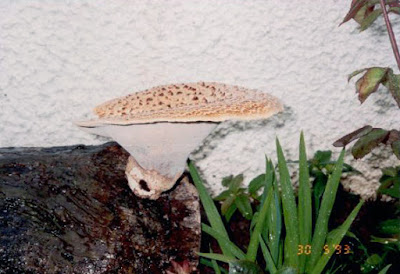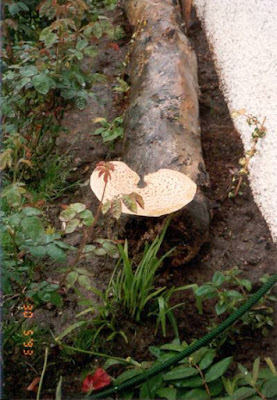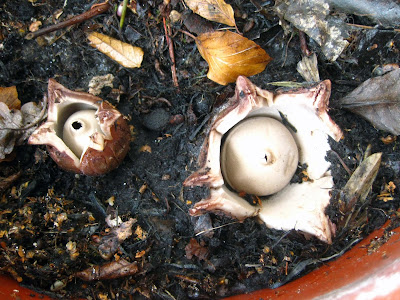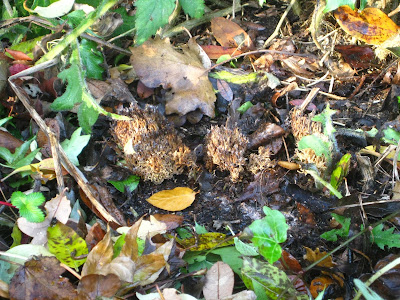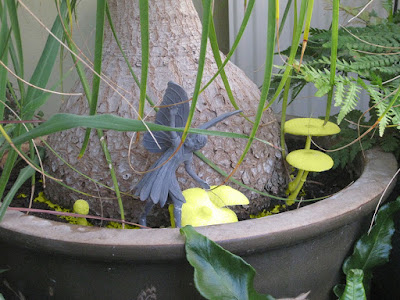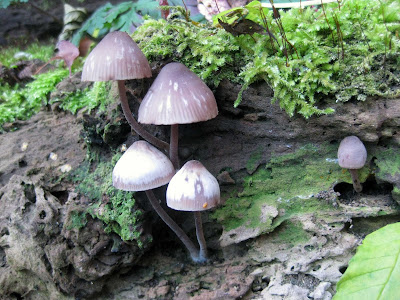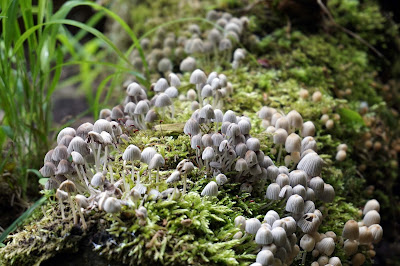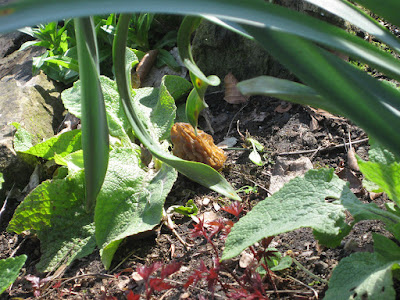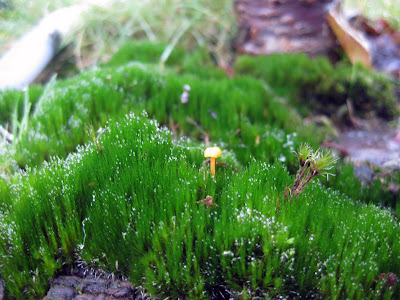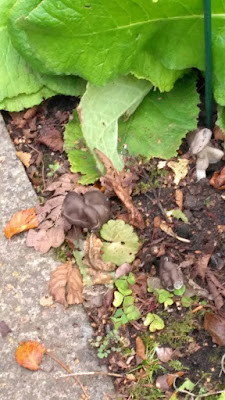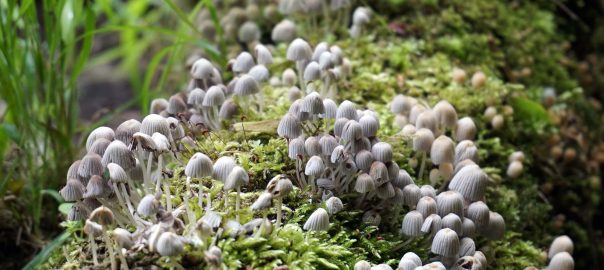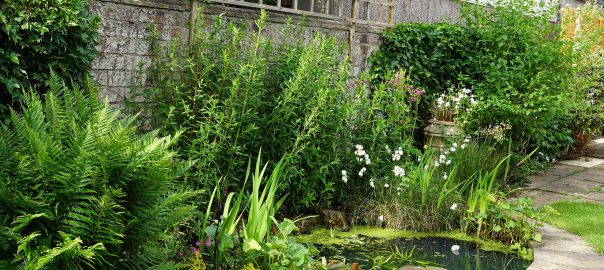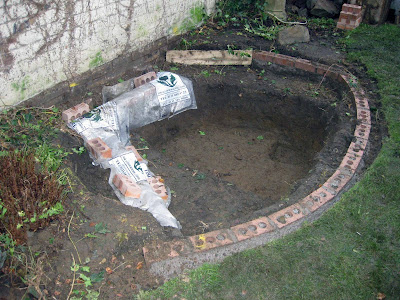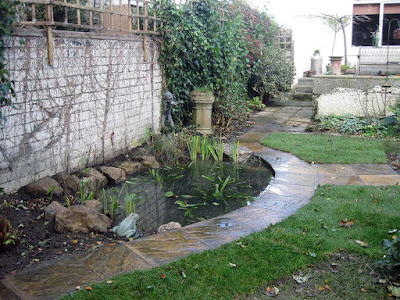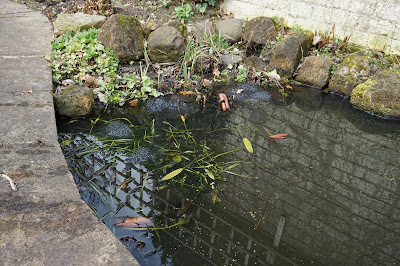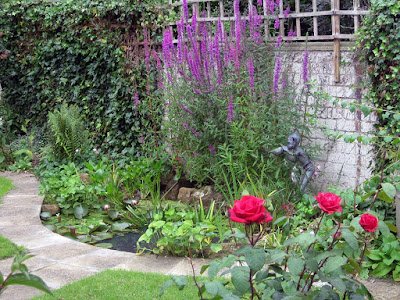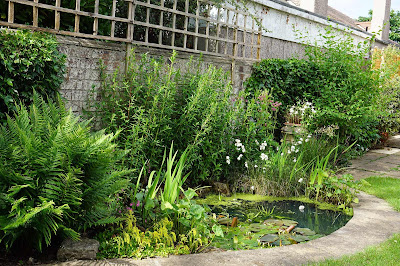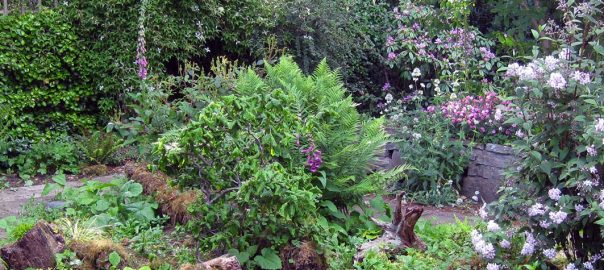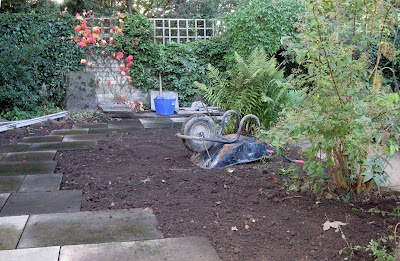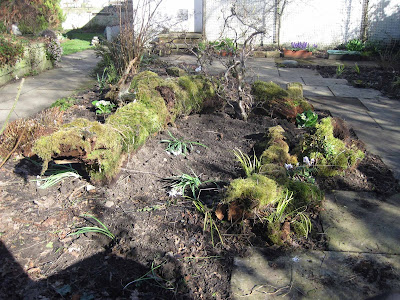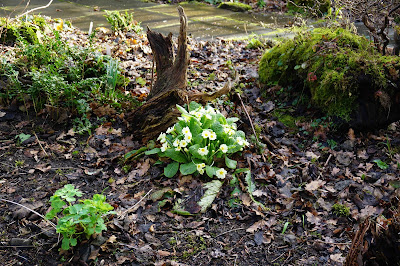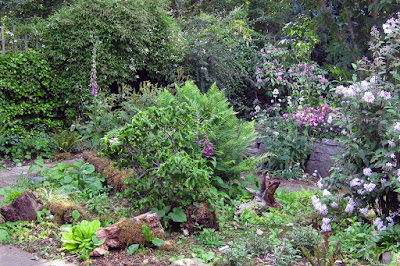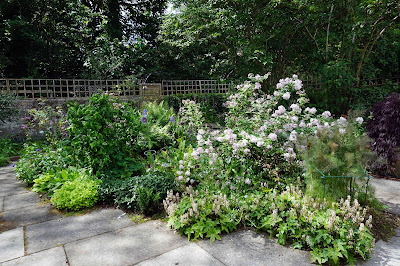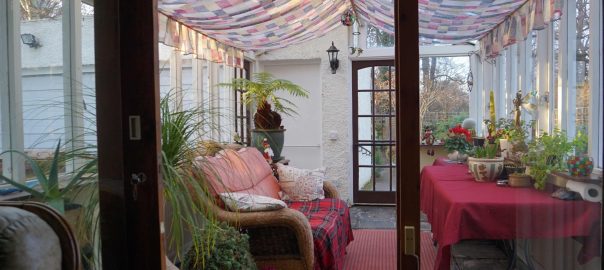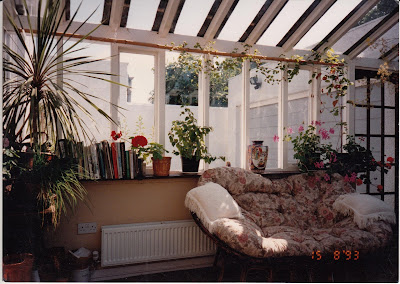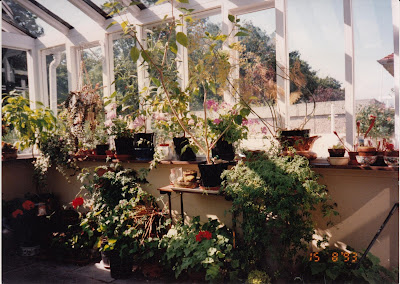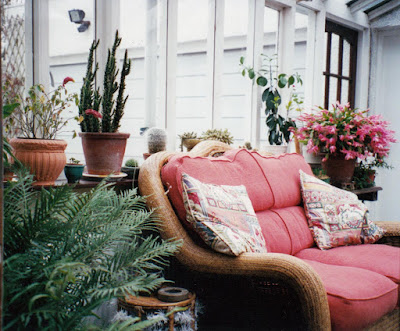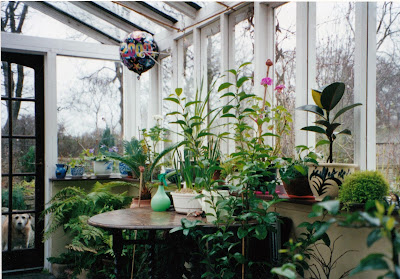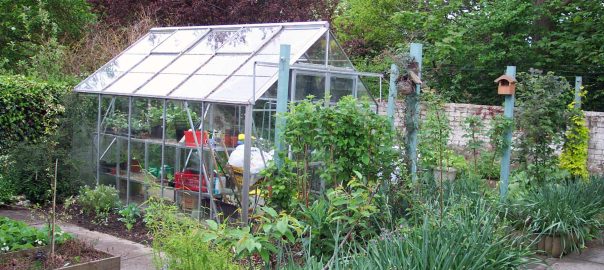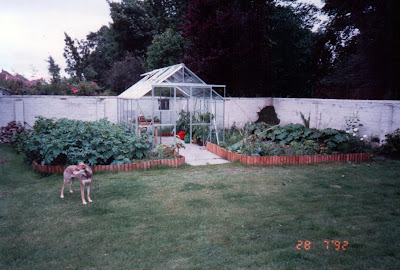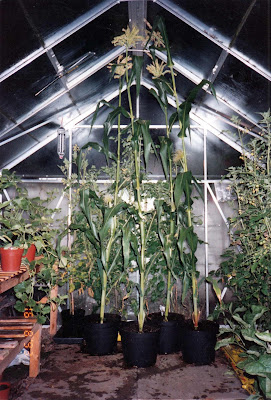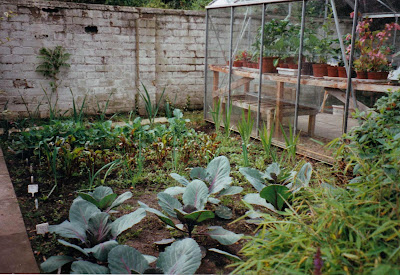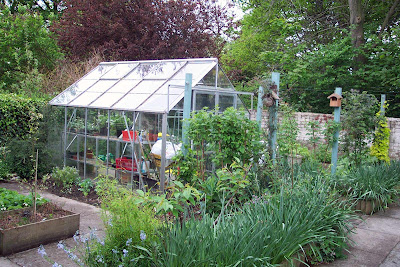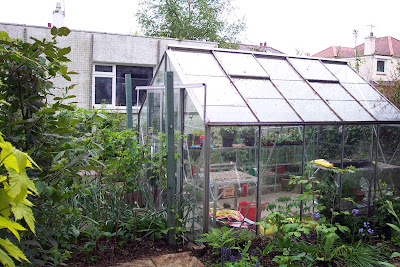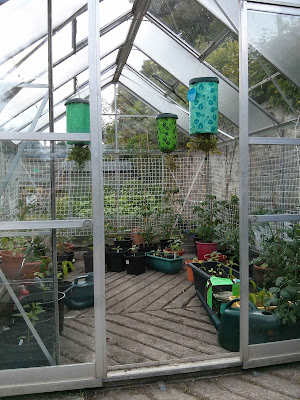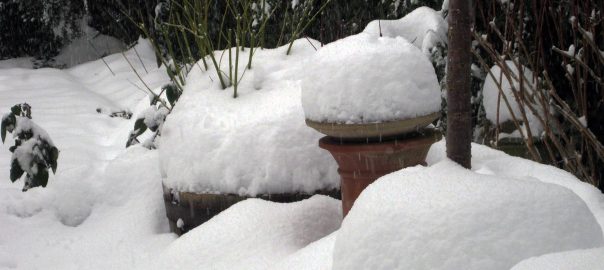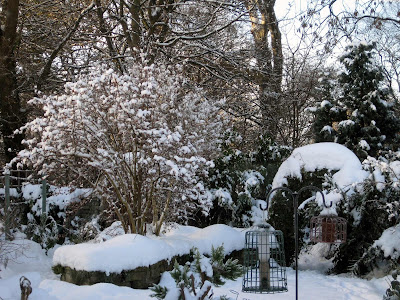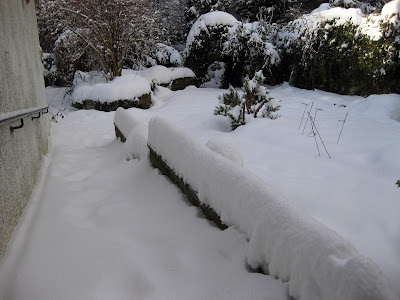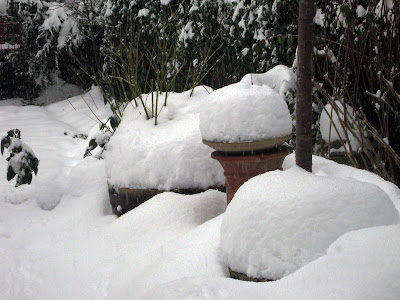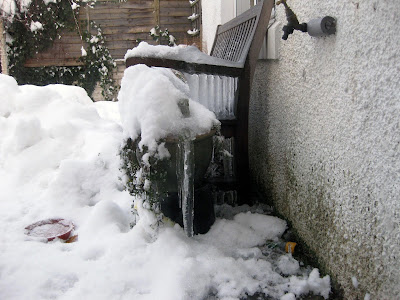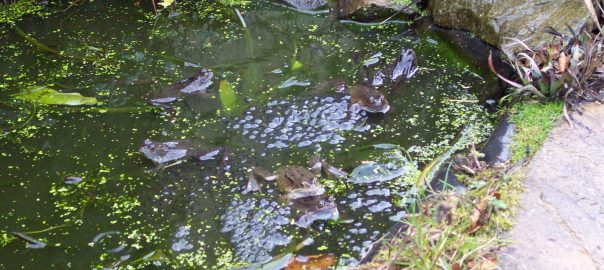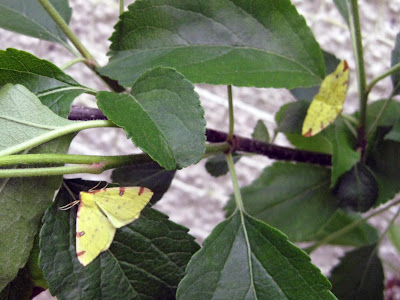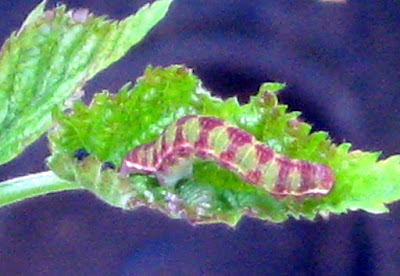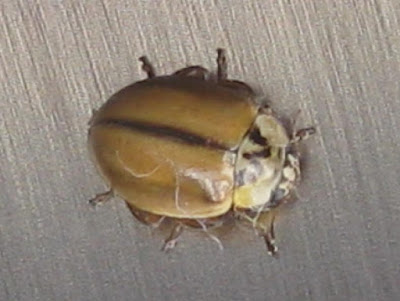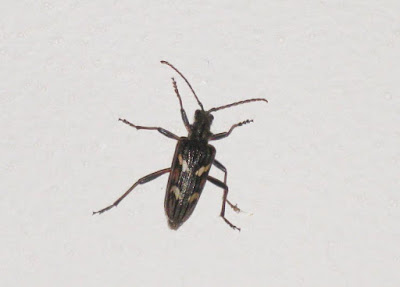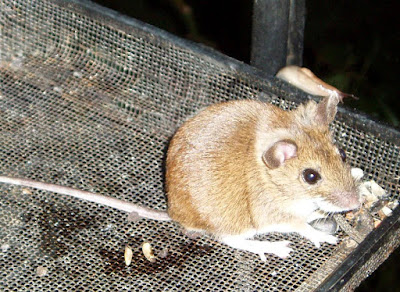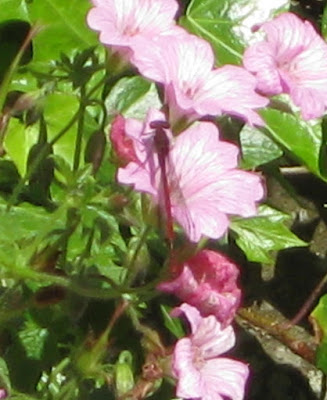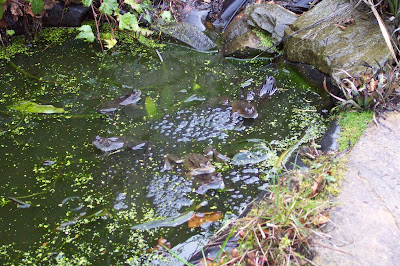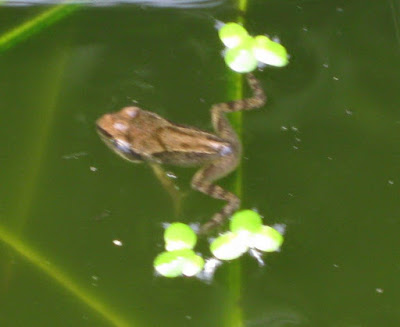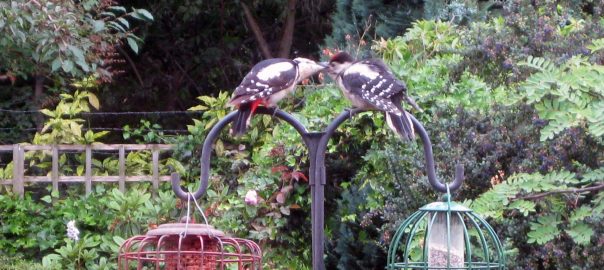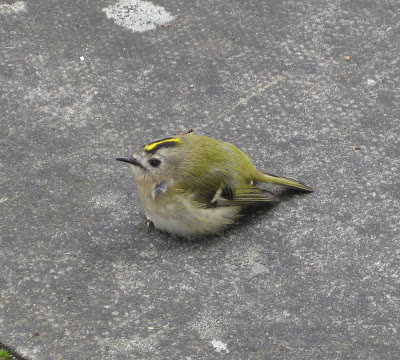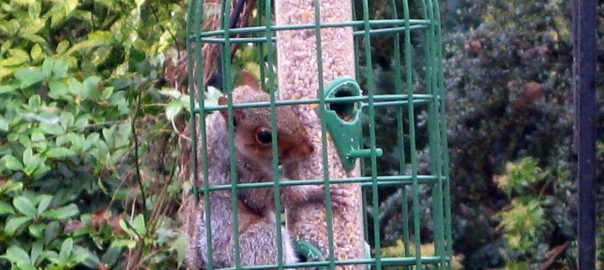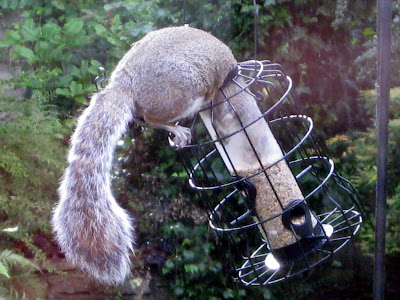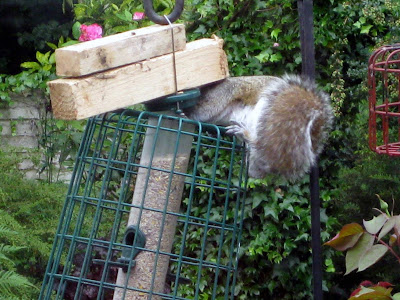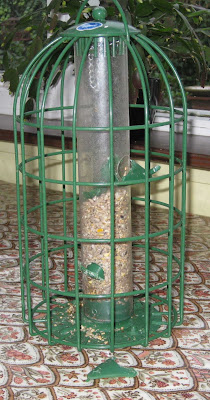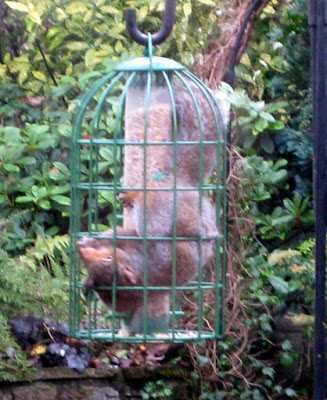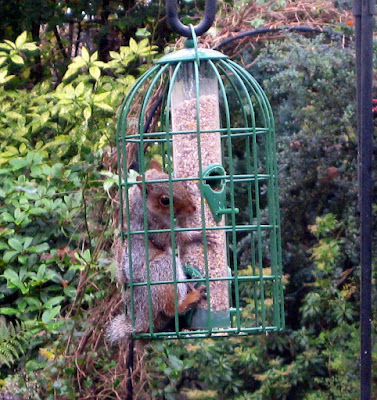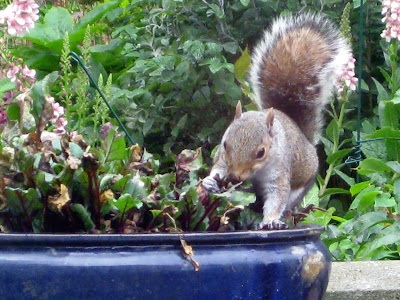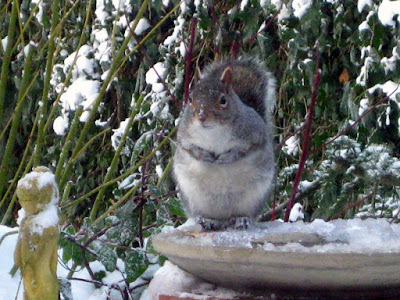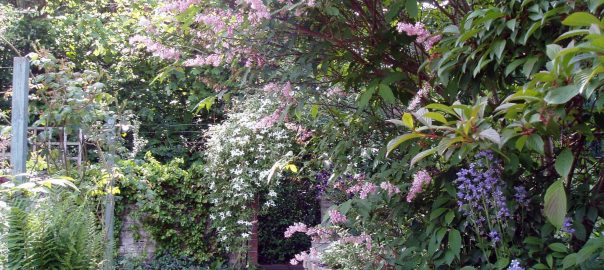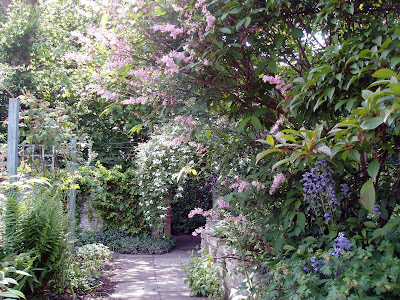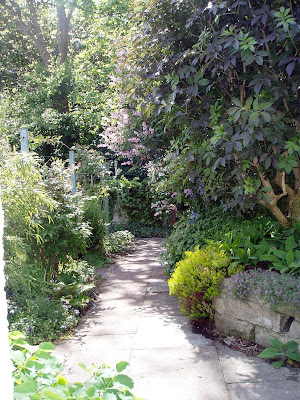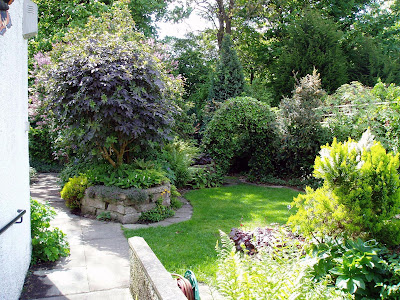I have always had the notion that I would befriend the wildlife in the garden and they would become tame enough feed by hand. Our dogs didn’t share that notion though especially our latest one. He does not want to share the garden with any of them.
The smaller birds he tolerates but he will see off pigeons, crows and the likes. At one point we did manage to get tame pigeons by keeping the dogs indoors at bird feeding times but that kind of back fired on us because every time I went out to the garden I was followed
around by a flock of pigeons. So we stopped feeding them from our hands and only put the food out in bird feeders and on a small tray. Well now, my photographs can look a bit grainy if I have taken them from behind a dirty window and they are all different sizes but hey ho I am not trying to win any photography prizes. We have most of the usual suspects visiting the garden: tits, sparrows, thrushes, blackbirds, crows, magpies, jackdaws, wrens, robins, haw finches, bullfinches, goldfinches, chaffinches, starlings, wood pigeons, feral pigeons, collared doves, chiff-chaffs, black caps, nuthatches, tree creepers, greater spotted woodpeckers, swifts or fly catchers, tawny owls (heard only and found pellets but have never seen one yet) and even a gold crest, a grey wagtail, siskin, sparrowhawk, herons and pheasants. Some of the birds go for the frogs and tadpoles. The magpies and crows flip out the tadpoles onto the slabs then pick them off. The robins come down to the pond when I am clearing the weeds from the surface and pick out any creepy crawlies and any unfortunate tadpoles. The herons sit on the garage roof where they get a great view of the pond and surrounding area and they can be seen have a wander all around the garden in search of frogs. One poor sparrow photographed had a deformed beak but managed to eat the bird seed ok. One or two blackbirds had partial loss of pigment (leucism) ie. a white tail feather. We even had a lost racing pigeon wander into the house but that was a missed photo opportunity.
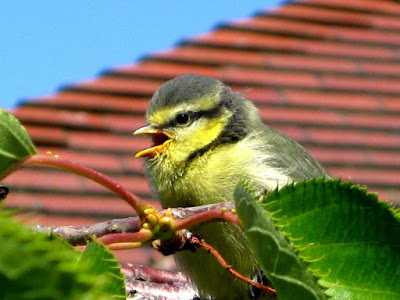 |
| Chirping bluetit. |
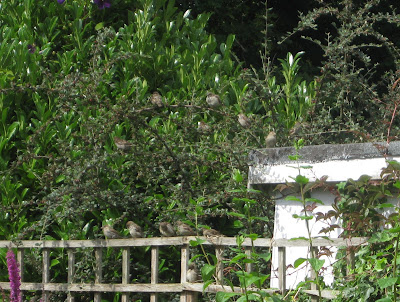 |
| Lots of sparrows. |
 |
| Sparrow with strange beak. |
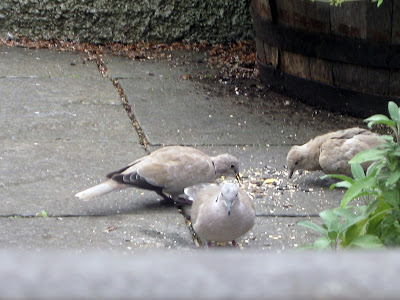 |
| Doves with youngster. |
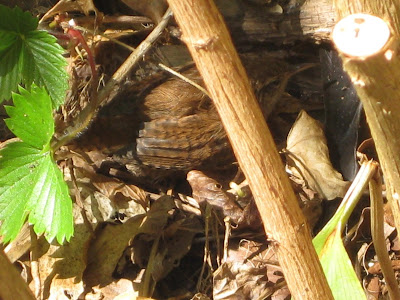 |
| Wren hiding. |
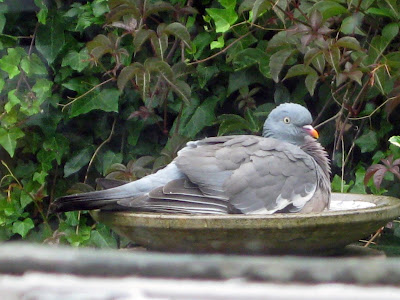 |
| Pigeon bathing. |
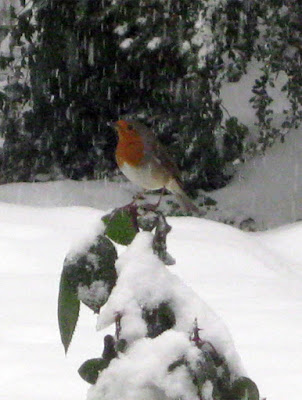 |
| Robin in snow. |
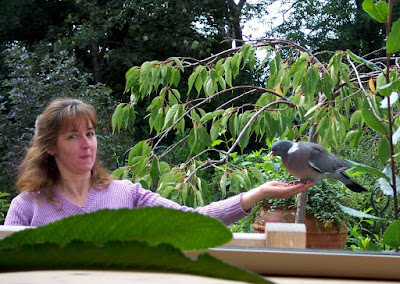 |
| Feeding pigeon. |
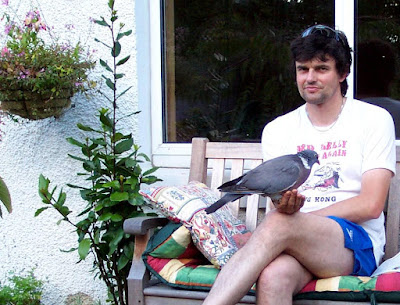 |
| Feeding pigeon. |
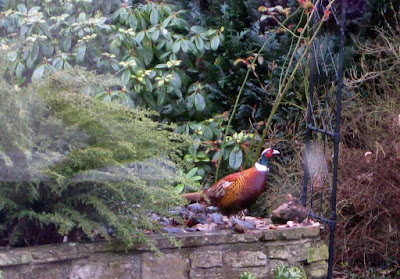 |
| Cock pheasant. |
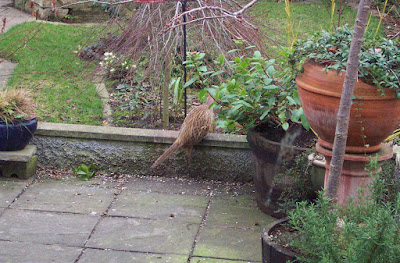 |
| Hen pheasant. |
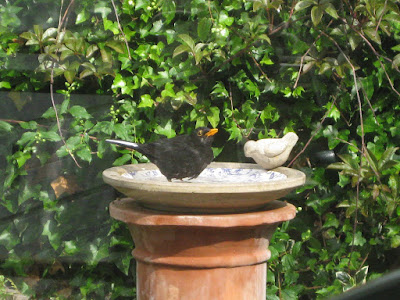 |
| Blackbird bathing. |
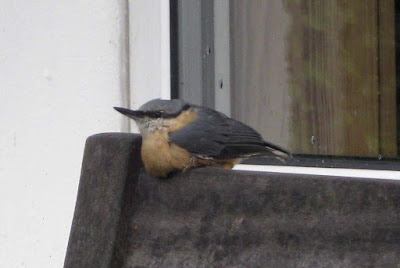 |
| Nuthatch – a bit dazed after flying into window. |
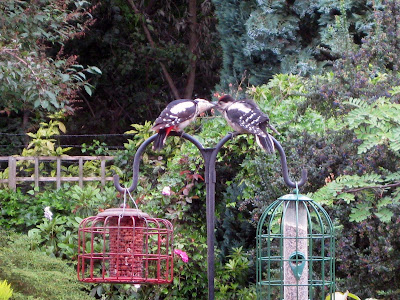 |
| Woodpecker feeding youngster. |
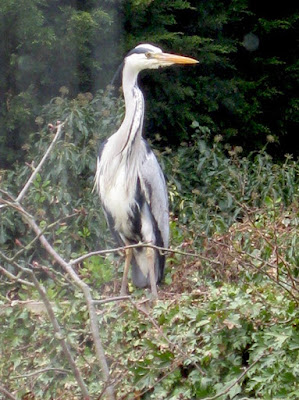 |
| Heron. |
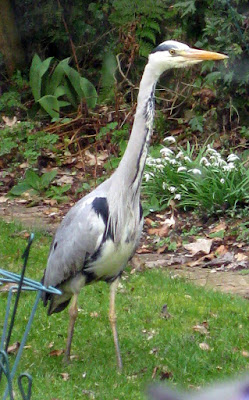 |
| Heron looking for frogs. |
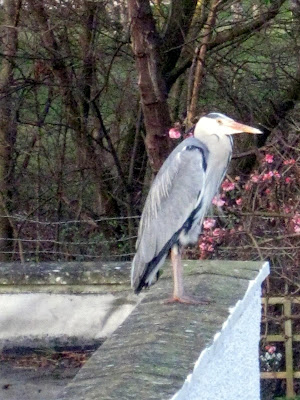 |
| Heron on lookout. |
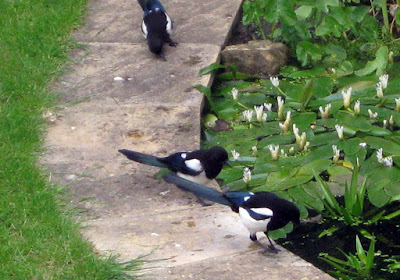 |
| Magpies fishing for tadpoles. |
